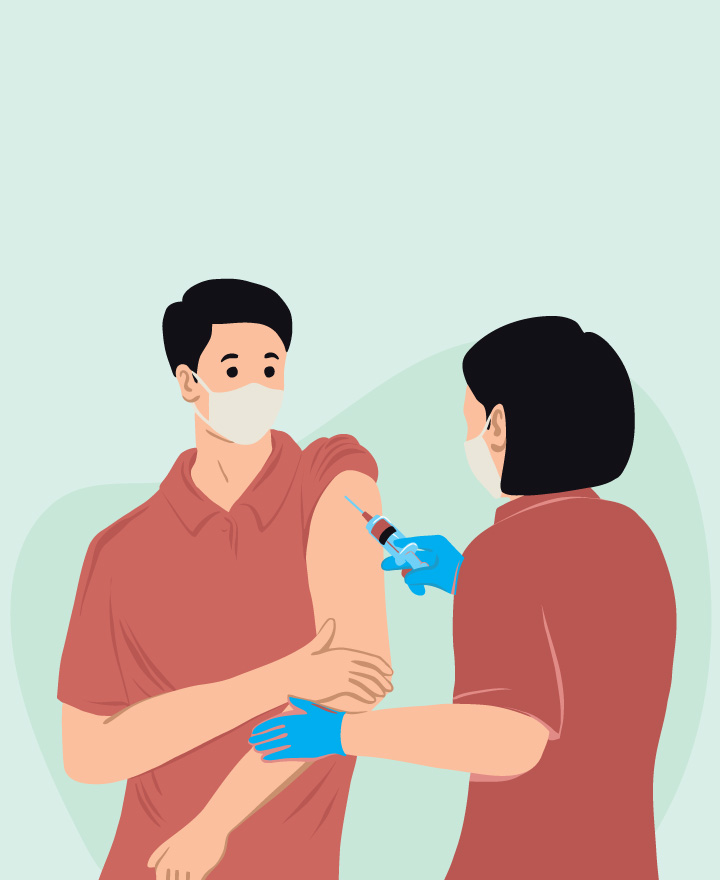

Tuberculosis - Diagnosis And Treatment
Tuberculosis (TB) is a significant global health challenge due to its infectious nature and ability to affect not just the patient's lungs but also other vital organs such as the kidneys, spine, and brain. With timely diagnosis and certain lifestyle modifications we can prevent and limit the spread of this disease among public. Take a look at this article to learn about the diagnosis and treatment options available for tuberculosis.
Diagnosis of Tuberculosis
Diagnosing tuberculosis (TB) typically involves a combination of medical history, medical examination, and various tests. Here are some common methods used for diagnosing TB:
1. Medical History & physical examination
Your doctor will ask about symptoms such as persistent cough, fever, weight loss, etc. Along with this they will also assess risk factors, such as recent travel history to a TB-endemic area, contact with an individual suffering from TB, and for any underlying medical conditions that can weaken the immune system.
2. Tuberculin Skin Test (TST)
Also known as Mantoux test, this involves injecting a small amount of tuberculin, a purified protein derivative (PPD), into the skin, usually on the forearm. After 48 to 72 hours the doctor will check the injection site for a reaction. A positive reaction will indicate exposure to the bacteria that can cause TB.
3. Chest X-ray
This can reveal abnormalities in the lungs suggestive of TB.
4. Sputum Spear Microscopy
This test involves examining sputum under a microscope to detect the presence of acid-fast bacilli (AFB), which are characteristic of the bacteria causing TB.
5. Blood Tests
The doctor will conduct interferon-gamma release assays (IGRAs) blood tests to detect the presence of specific immune cells that react to TB proteins.
Treatment of Tuberculosis
Treatment of TB typically involves a combination of antibiotics taken over a prolonged period to effectively eliminate the bacteria and prevent the development of drug resistance. The standard tuberculosis treatment regimen involves taking a combination of antimicrobial drugs. This combination of antibiotics is often referred to as ‘first-line therapy’. Treatment for drug-susceptible TB typically lasts for a minimum of six months and it is divided into 2 phases.
It is crucial for individual with TB to complete their full course of treatment as prescribed by a healthcare provider to prevent development of drug-resistant TB and also minimize the risk of relapse.
Prevention of Tuberculosis
The most efficient preventive measure is to vaccinate children early against TB. This can help protect them against severe forms of TB, while its efficacy in preventing pulmonary TB in adults is variable. Other than that, teach your child to follow proper hygiene like covering their noses and mouths around people who sneeze or cough. Also, gain knowledge about TB symptoms as it can help you to seek timely medical care.
Home Remedies for Tuberculosis
While medical treatment is compulsory for TB cure, some lifestyle modifications and home remedies can support conventional therapy and boost immunity toward TB. This includes:
• Eating a healthy, nutritious diet as it can help support the immune system and promote overall health.
• Get adequate rest and relaxation as it is crucial for the body’s recovery process.
• Drink plenty of fluids as it will not only keep you hydrated, but it will also help loosen mucus in the lungs.
• Gargle with warm salt water as this can soothe a sore throat and help reduce inflammation.
• Take steam inhalation as this can help relieve congestion and loosen mucus in the airways.
• Try herbal remedies as some herbs and spices have anti-microbial and anti-inflammatory properties that may help support the immune system and alleviate symptoms. For example include ginger, garlic, turmeric and tulsi.
• Practice deep breathing exercises
• Maintain good hygiene
• Engage in activities that help reduce stress and promotes relaxation.
• Quit smoking
Conclusion
By observing early symptoms and living a regulated life, one can access and provide timely and effective treatment for infectious medical conditions like tuberculosis.
One of the important components of our overall wellness is also being financially secured. Healthcare emergencies can happen any time, but a good health insurance policy can protect you from such uncertain situations. To know more about Wellness and other health related tips, visit the wellness corner.
Source: cdc.gov, who.int, mayoclinic.org
Disclaimer: This blog provides general information and discussions about health and related subjects. The information and other content provided in this blog, website or in any linked materials are not intended and should not be considered, or used as a substitute for, medical advice, diagnosis or treatment. Kindly contact your Doctor before starting a new medicine or health regime.
Related Articles
The Best Ways to Prevent Infections
Understanding Lung Cancer Causes
Tips to Keep Your Lungs Healthy and Whole
Chronic obstructive pulmonary disease (COPD)
What is Pneumonia- Symptoms & Causes
Published on May 08, 2024














 Health Insurance
Health Insurance  Travel Insurance
Travel Insurance  Car Insurance
Car Insurance  Cyber Insurance
Cyber Insurance  Critical Illness Insurance
Critical Illness Insurance
 Pet Insurance
Pet Insurance
 Bike/Two Wheeler Insurance
Bike/Two Wheeler Insurance  Home Insurance
Home Insurance  Third Party Vehicle Ins.
Third Party Vehicle Ins.  Tractor Insurance
Tractor Insurance  Goods Carrying Vehicle Ins.
Goods Carrying Vehicle Ins.  Passenger Carrying Vehicle Ins.
Passenger Carrying Vehicle Ins.  Compulsory Personal Accident Insurance
Compulsory Personal Accident Insurance  Travel Insurance
Travel Insurance  Rural
Rural